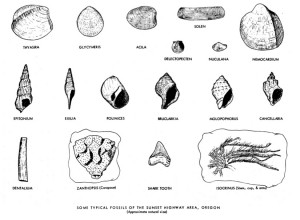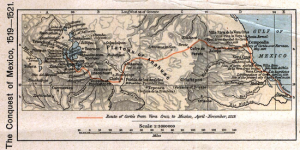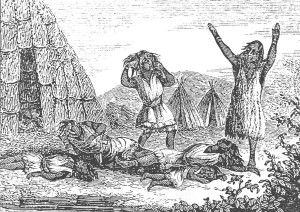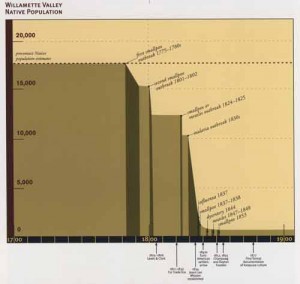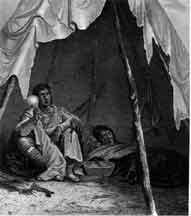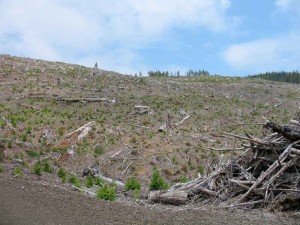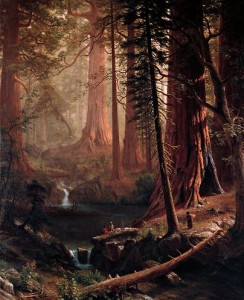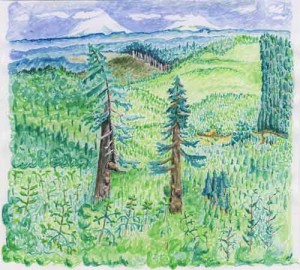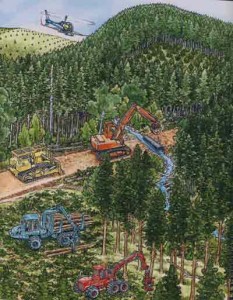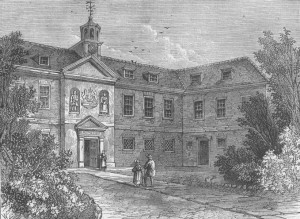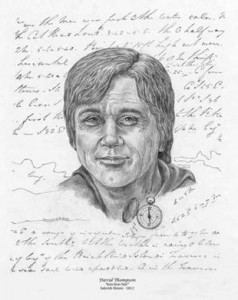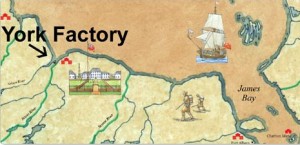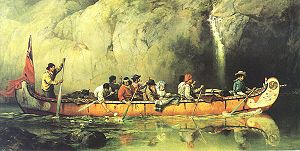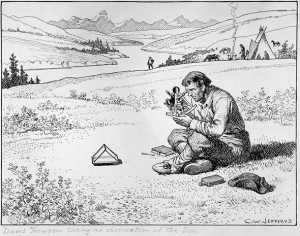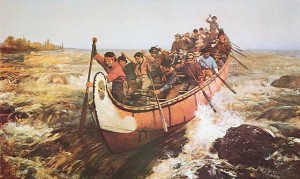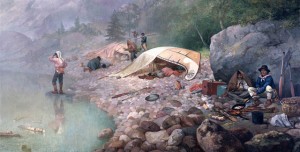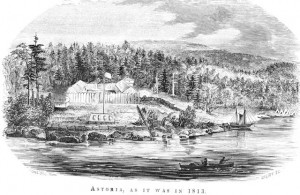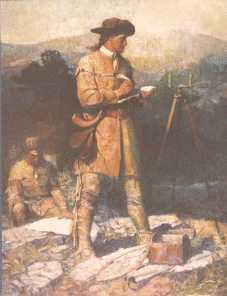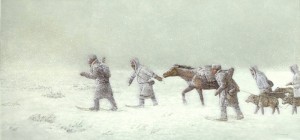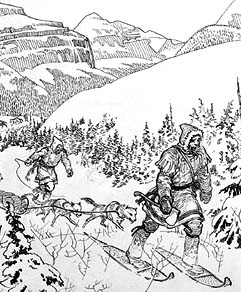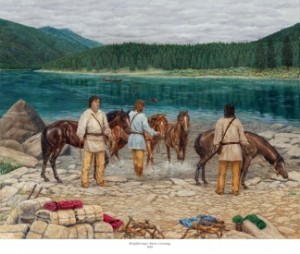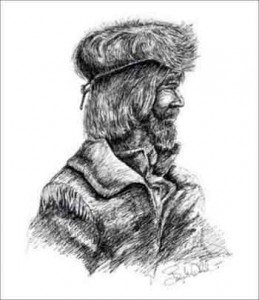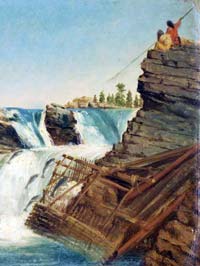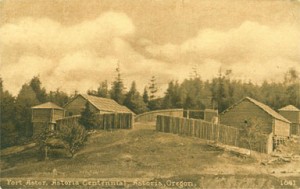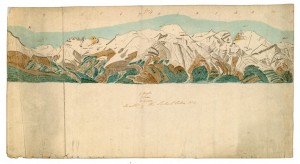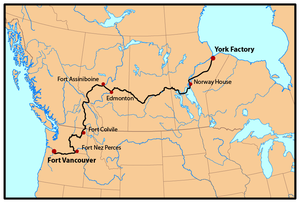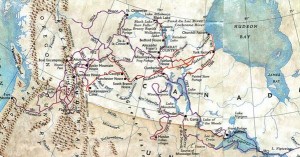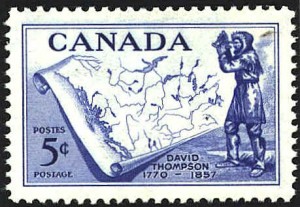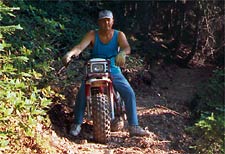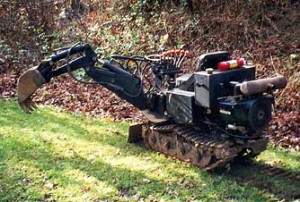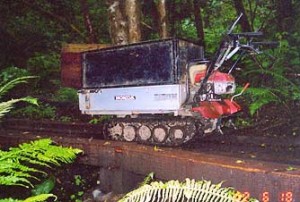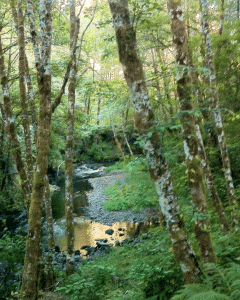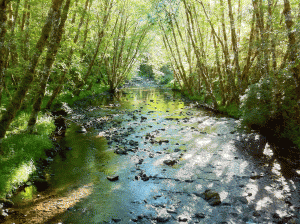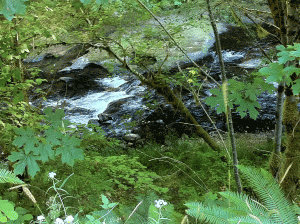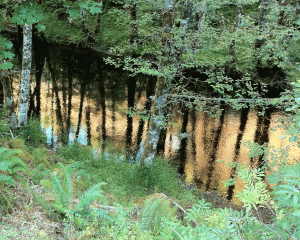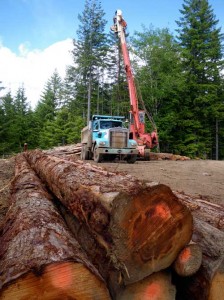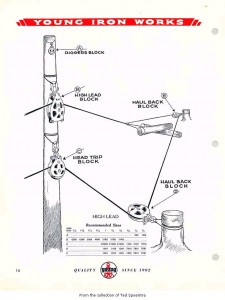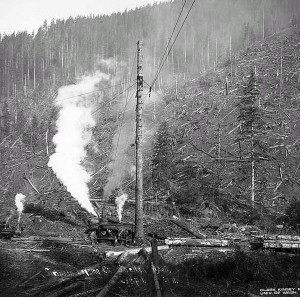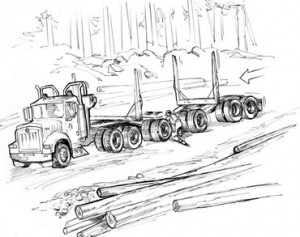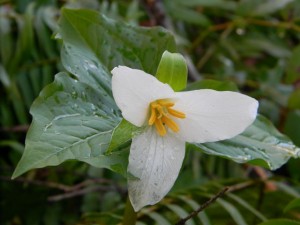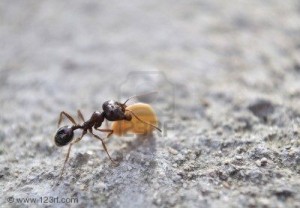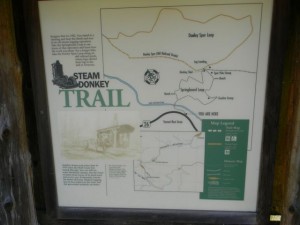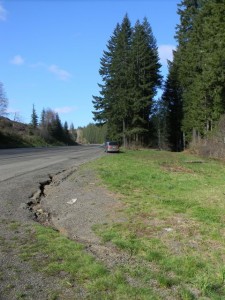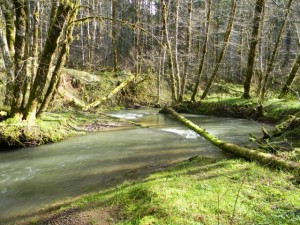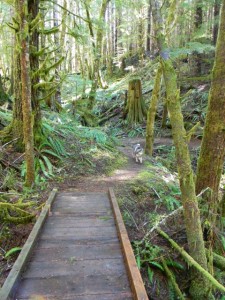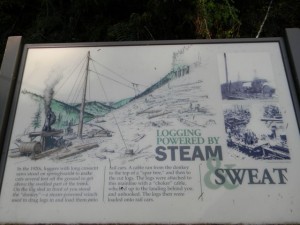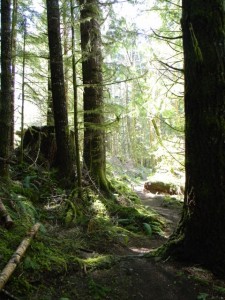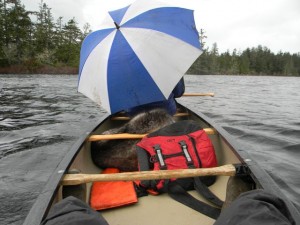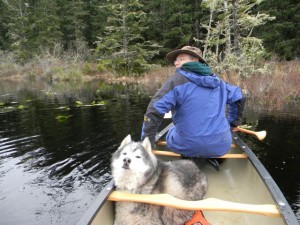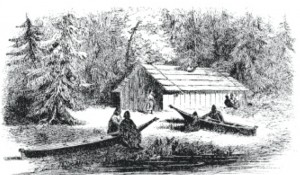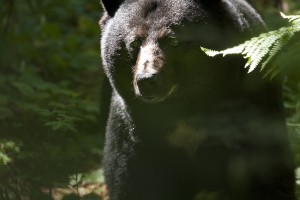Mud is us!
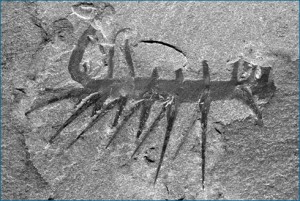 If you spend much time squelching through Oregon’s soggy landscapes you might get the feeling that we have only recently squeezed from the primordial mud. And that might not be too far off, if you permit me to readjust your watch to count eons instead of minutes.
If you spend much time squelching through Oregon’s soggy landscapes you might get the feeling that we have only recently squeezed from the primordial mud. And that might not be too far off, if you permit me to readjust your watch to count eons instead of minutes.
Less than a complete eon ago, just a mere 400 million years ago, during the Oligocene period Idaho had a lock on the best tropical beachfront property in the Northwest, but demand was a bit sluggish since only a few ungainly amphibians had actually waddled ashore to discover the benefits of terra firma. Instead the real action was in Oregon, which was covered by a subtropical sea and dotted with corral reefs. These warm waters were teaming with whimsical life forms. Jellyfish floated aimlessly in the waters, worms squirmed through the silted seabed, centipedes marched stoically across the muddy ocean floors and trilobites sporting fancy ribbed carapaces dominated the social scene for more than 350 million years. But as our emerging continent migrated slowly northwards cooling water temperatures would soon introduce new species like starfish, cuttlefish, bi-valve clams, horseshoe crabs, sharks and primitive vegetation on land.
In the meantime, the mud that I mentioned earlier was continuing to flow unabated into the shallow sea covering the eon’s worth of discarded trilobite carapaces, the remains of the myriad centipedes and the near infinite squiggly-wigglies that perished in that tepid bath that covered our present-day Oregon. Baked into the primordial muck for eternity these caked layers sank quietly into the earth’s crust. But here and there the stresses and jostling of the earth’s skin would force one of these long-buried layers to the surface to reveal a crowded catacomb of early protean life.
For those with the feet to discover these troves and the eyes to discern them, many of the North Coast mountains’ moss-covered outcroppings serve as remarkable windows into an antiquity beyond comprehension to most of us. The vicinities of the Sunset Highway are rich in paleontological evidence of this long-ago era in which mud itself was both the stimulus for life and the coffin to which it was confined once the shallow seas in Oregon dried to become the basis for our current muddy existence.
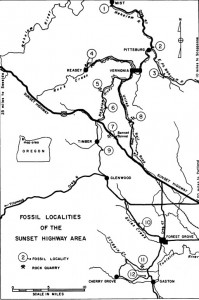 That said, my best find was not a crumbling mollusk, but rather an old report issued by the Oregon Department of Geology and Mineral Industries (DOGAMI) in 1957 and written by Margaret L. Steere. With that pragmatic certainty that characterized so our post-war years, Margaret begins her report with the incontrovertible assertion that “the Sunset Highway area…is famous for its abundant marine fossils of the Oligocene Age.” Why, of course, silly me for not immediately knowing that!
That said, my best find was not a crumbling mollusk, but rather an old report issued by the Oregon Department of Geology and Mineral Industries (DOGAMI) in 1957 and written by Margaret L. Steere. With that pragmatic certainty that characterized so our post-war years, Margaret begins her report with the incontrovertible assertion that “the Sunset Highway area…is famous for its abundant marine fossils of the Oligocene Age.” Why, of course, silly me for not immediately knowing that!
The oldest fossiliferous sediments found in Oregon, the Cowlitz formation, date back to the Upper Eocene, but in this region they are comprised mostly of conglomerates and sandstone that were deposited near the shores of the Eocene sea that covered our area. Settled on top of this layer, are the more interesting Oligocene marine formations. The first two sites to be recorded were located near the tiny community of Keasey (near Vernonia) and about .2 miles north of the small community of Pittsburg on US 47. This formation appears as a grey siltstone formation that reaches 2,000 ft. in depth and runs generally in a broad band from Keasey in the north to Cherry Grove (near Gaston) in the south.
The most accessible locations mentioned in the report include the following sites that are in close proximity to existing hikes that I have surveyed.
Site #2 is located .2 miles north of the community of Pittsburg on Highway 47. The Vernonia to Elk Creek trail cuts across the headland between the east Fork of the Nehalem River and the main stem of the Nehalem River as it turns northwards from Vernonia. On the DOGAMI map, it cuts horizontally from Site # 3 to Vernonia itself. Though not in walking vicinity of the Vernonia to Elk Creek trail, the Pittsburg site is mere minutes away by car.
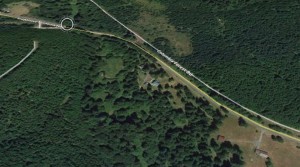 Site #3 is a short distance on foot from the Crown Zellerbach trail that parallels the county road between Scappoose and Vernonia. This stretch of the trail is surveyed and described as the “Elk Creek to Summit” segment of the CZ Trail.
Site #3 is a short distance on foot from the Crown Zellerbach trail that parallels the county road between Scappoose and Vernonia. This stretch of the trail is surveyed and described as the “Elk Creek to Summit” segment of the CZ Trail.
Just to the west of Hawkins Creek, the CZ trail runs parallel with the county road. It passes by a pretty log cabin set in a meadow on the south side of the county road. 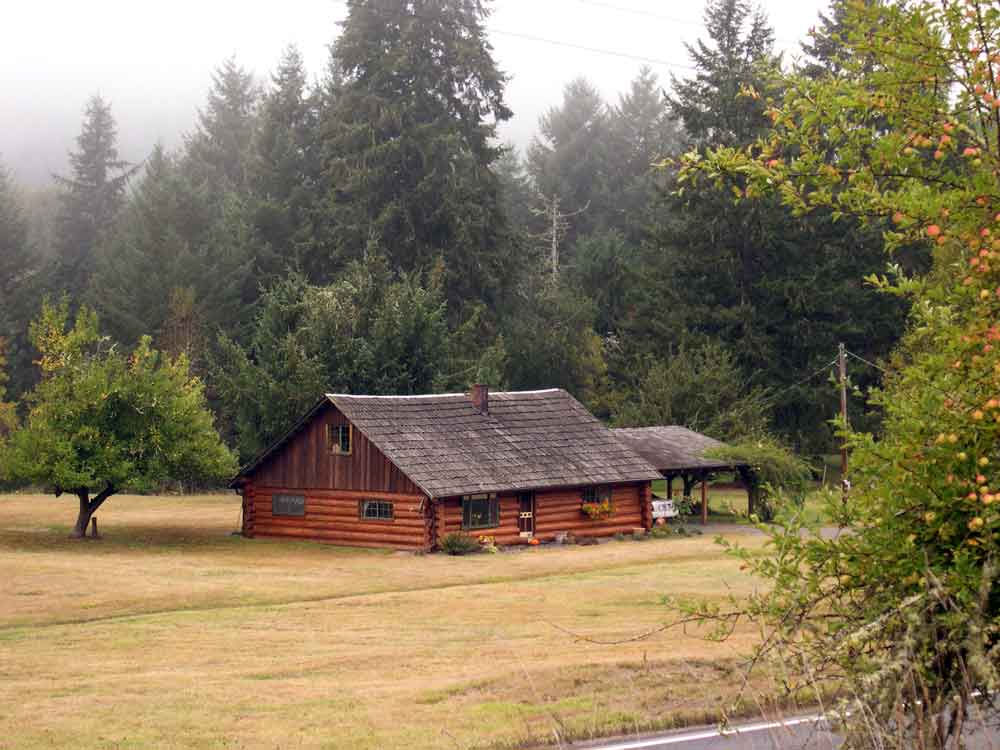 All along this gently descending slope look for outcroppings on the north side of the trail. This portion of the trail had several trestles as recently as the 1970’s, but they were removed after the development of the County Park at Scaponia. The
All along this gently descending slope look for outcroppings on the north side of the trail. This portion of the trail had several trestles as recently as the 1970’s, but they were removed after the development of the County Park at Scaponia. The 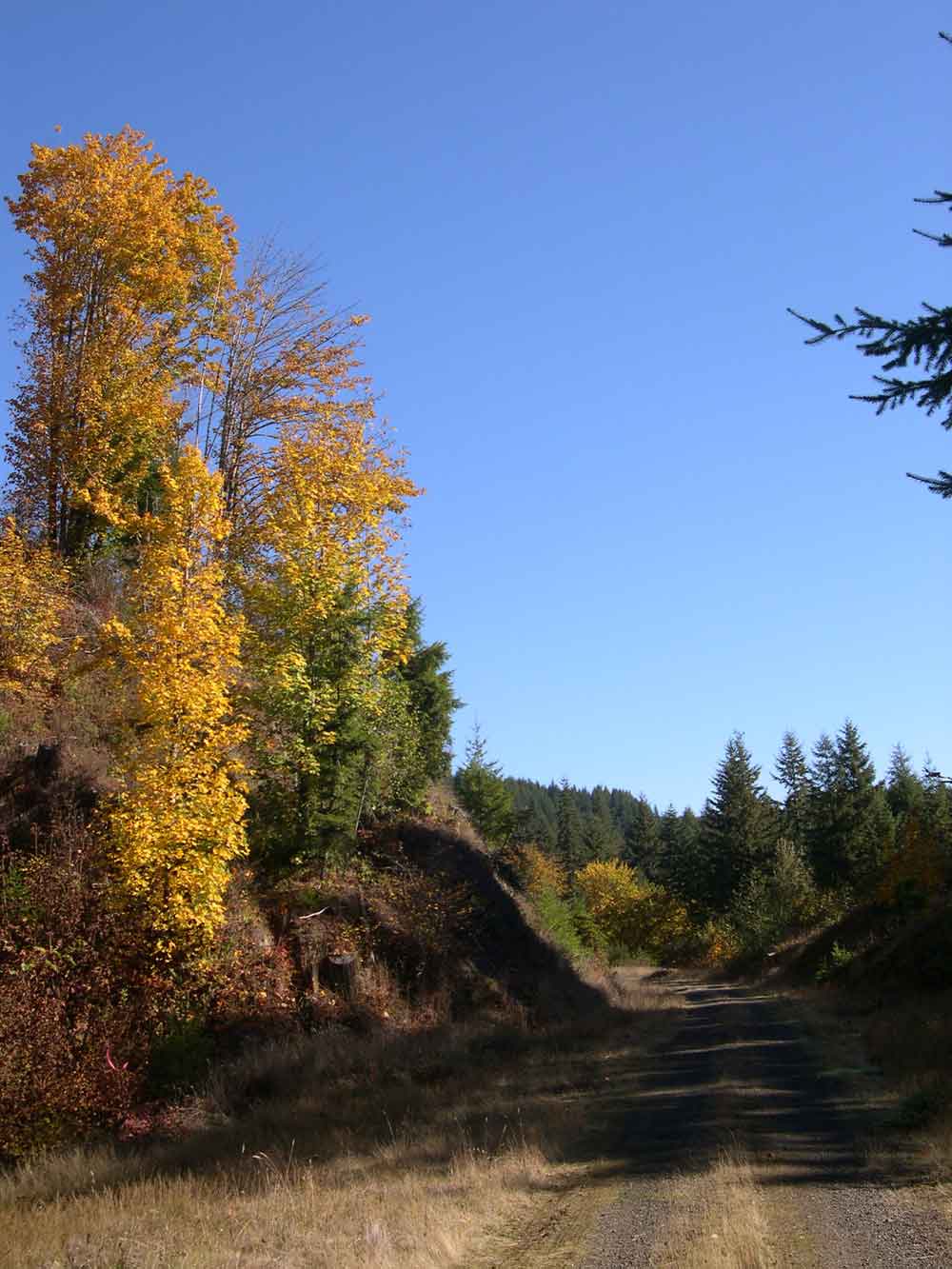 1957 DOGAMI report indicates that the fossil beds are exposed for several hundred feet all along this portion of the trail. A short distance past the log cabin the county road and the CZ trail diverge, but before they split there is a gate that connects the two roads. From here it is a short walk along the county road to cross the bridge. At the west end of the bridge you will find another outcropping on a steep slope about 30 feet above the road.
1957 DOGAMI report indicates that the fossil beds are exposed for several hundred feet all along this portion of the trail. A short distance past the log cabin the county road and the CZ trail diverge, but before they split there is a gate that connects the two roads. From here it is a short walk along the county road to cross the bridge. At the west end of the bridge you will find another outcropping on a steep slope about 30 feet above the road.
Site # 4
This site is located near the erstwhile community of Keasey – which now is comprised of one house and a herd of elk. Keasey can be reached by traveling 8 miles from State Avenue and Highway 47 in Vernonia. The outcroppings occur on the banks of Rock Creek. According to the 1957 directions the best sites are located near the trestle that crossed Rock Creek to the Southwest of Keasey, sometimes referred to as Dead Man’s Trestle. The outcroppings occur near the water level on the low bank of Rock Creek, about 8.8 miles from Vernonia.
While this location is not mentioned in any of the trails surveyed, it is along the route that I frequently took to reach the East-side Grade and Rocky Point. If one goes to the gate at the end of the road beyond Keasey, a logging road ascends the east slope of the Rock Creek ravine. This route will eventually bring you to the Rocky Point quarry at the summit (DOGAMI site #5), from whence you can connect with the East-side Grade.
The rail line originally followed Rock Creek all the way to Camp McGregor near the Sunset Highway. However today it is difficult to follow the old rail line since much of this portion of the route was traversed by trestle, and once removed there remained no passable grade to follow. I have descended Rock Creek from above, but even on the west side of the Creek the track is quite obliterated and the terrain is too steep to traverse without significant struggles.
Site # 5
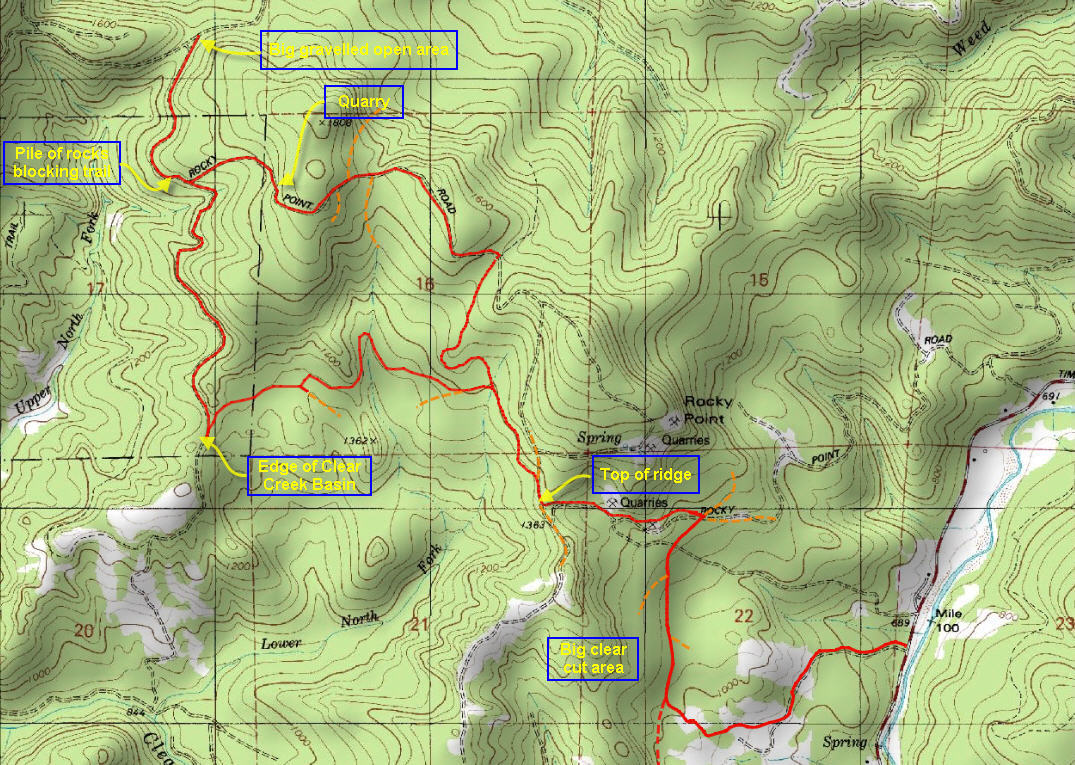 This location is a quarry located on Rocky Point to the west of the Timber Road leading north from the Sunset Highway to Vernonia. From the attached map of the Rocky Point to East Side Grade Trail, you can see that this area has a number of quarries and the description is unclear as to which of these it is. The area can be reached from the Timber road, as described in the “Rocky Point to East Side Grade” trail description.
This location is a quarry located on Rocky Point to the west of the Timber Road leading north from the Sunset Highway to Vernonia. From the attached map of the Rocky Point to East Side Grade Trail, you can see that this area has a number of quarries and the description is unclear as to which of these it is. The area can be reached from the Timber road, as described in the “Rocky Point to East Side Grade” trail description.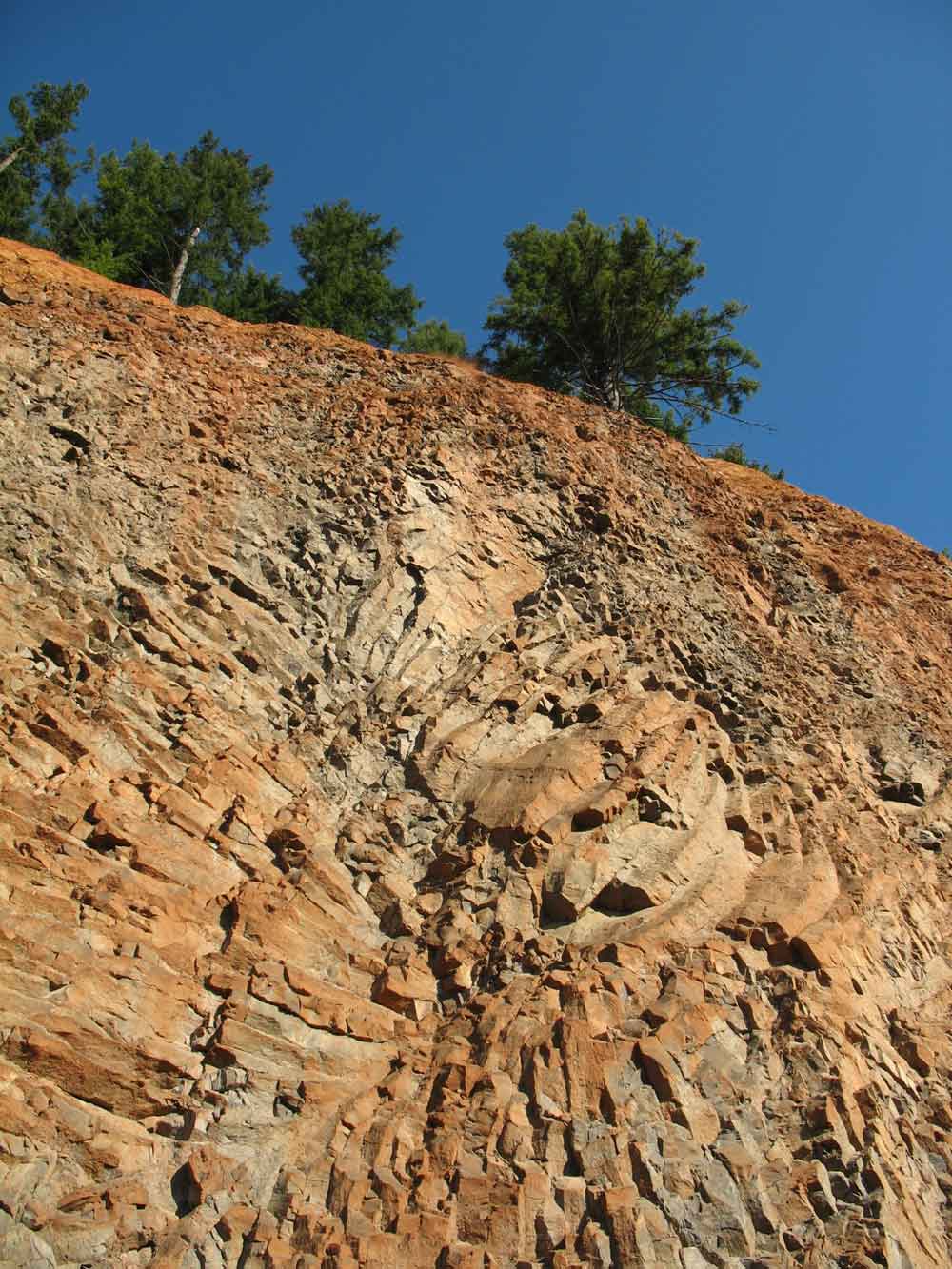
Near the juncture with the East Side Grade is a quarry (marked on the map, as “quarry”) that features a spectacular basalt formation that shows the beauty of the folding that can sometime rearrange the basalt strata into amazing designs.
Site # 6
Another fossiliferous outcropping of the Keasey formation occurs in a prominent cut along the Nehalem River on the east side of the road from Timber to Vernonia, 3 miles north of the junction with the Sunset Highway. Large pelecypods were reportedly found at this site.
Site # 7
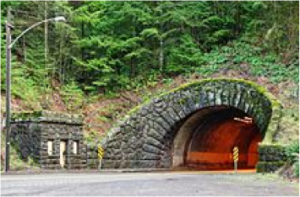 Both ends of the Dennis L. Edwards tunnel were originally cited as being good locations to reach the underlying shale beds that contained the fossil-bearing outcroppings, but since it’s the tunnel’s construction in 1940 weathering and grass plantings have degraded the soft shale causing it to disintegrate. In 2002 the tunnel was repaired, and the cuts into the hillside have been further landscaped obscuring the underlying fossil beds.
Both ends of the Dennis L. Edwards tunnel were originally cited as being good locations to reach the underlying shale beds that contained the fossil-bearing outcroppings, but since it’s the tunnel’s construction in 1940 weathering and grass plantings have degraded the soft shale causing it to disintegrate. In 2002 the tunnel was repaired, and the cuts into the hillside have been further landscaped obscuring the underlying fossil beds.
Site # 8
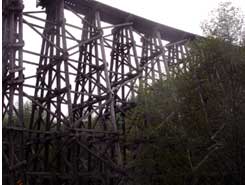 Another location mentioned in the 1957 report is at either end of the high curving rail road trestle that crosses Highway 47 about 6.2 miles north of the Sunset highway. This location is located very close to the Banks to Vernonia trail, which is described in the “Stub Stewart to Trestle” segment of the Banks to Vernonia Trail. According to the DOGAMI report the site is noted for the presence of fossilized crinoids. To reach the outcroppings follow the Banks to Vernonia Trail from the nearby parking lot up the tracks and follow them out to the trestle. Along the way you can locate the fossils in the exposed outcroppings along the tracks.
Another location mentioned in the 1957 report is at either end of the high curving rail road trestle that crosses Highway 47 about 6.2 miles north of the Sunset highway. This location is located very close to the Banks to Vernonia trail, which is described in the “Stub Stewart to Trestle” segment of the Banks to Vernonia Trail. According to the DOGAMI report the site is noted for the presence of fossilized crinoids. To reach the outcroppings follow the Banks to Vernonia Trail from the nearby parking lot up the tracks and follow them out to the trestle. Along the way you can locate the fossils in the exposed outcroppings along the tracks.
Site # 9
Further south there are further instances where the Keasey formation is exposed. On the road that connects Timber to the Gales Creek area is an excellent exposed fossil bed. This Keasey formation crops up in a prominent cut at a sharp bend in the Timber-Glenwood road. It is located 1.3 miles south of the railroad crossing in Timber or about 5.2 miles from Glenwood.
Three further sites are mentioned in Gales Creek area, at a quarry on Scoggins Creek road and finally on the north side of Cherry Grove road. This is also the area of known Indian Petroglyphs along the embankments of the upper Tualatin River, near the Richmond Hill Bridge.

